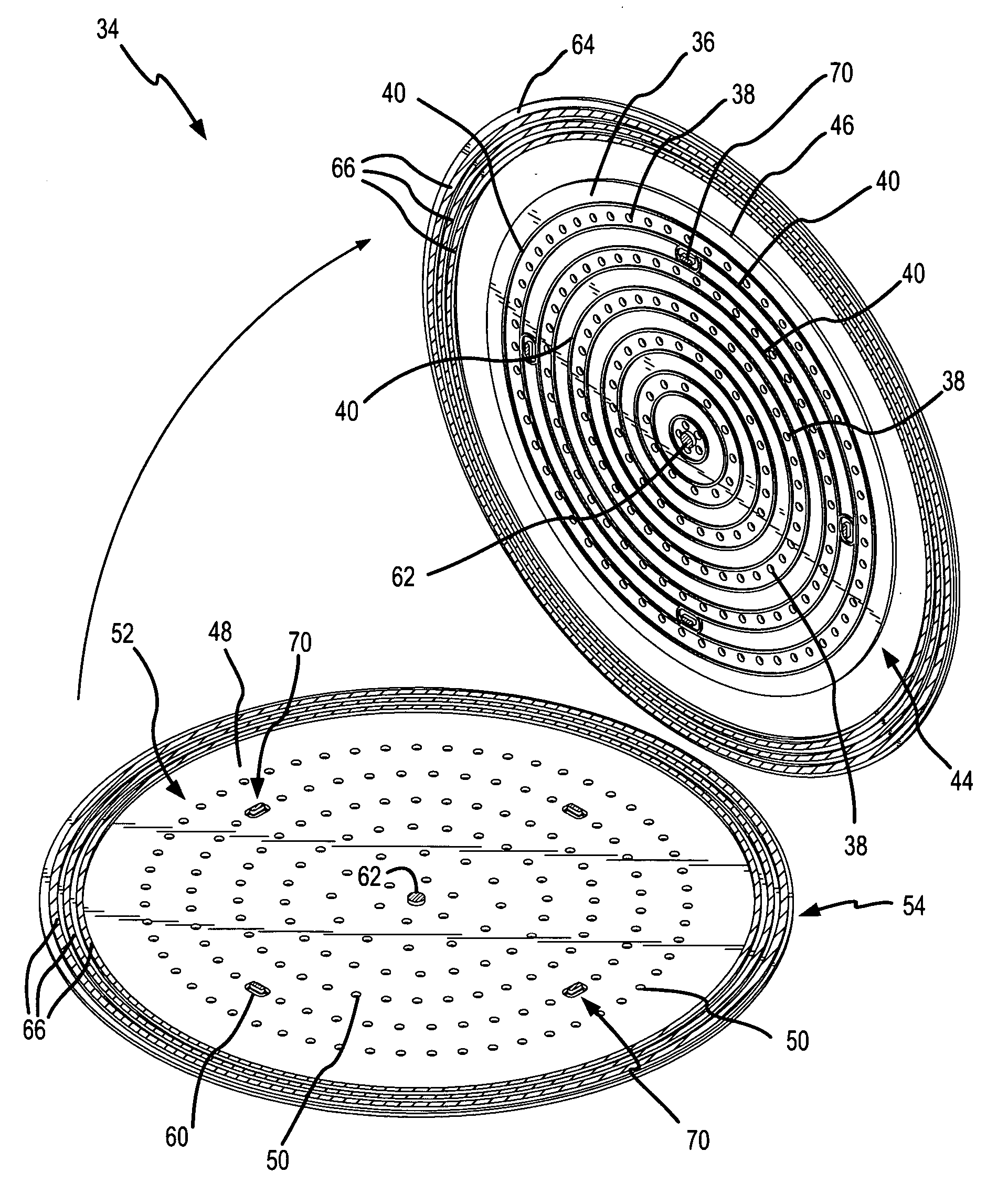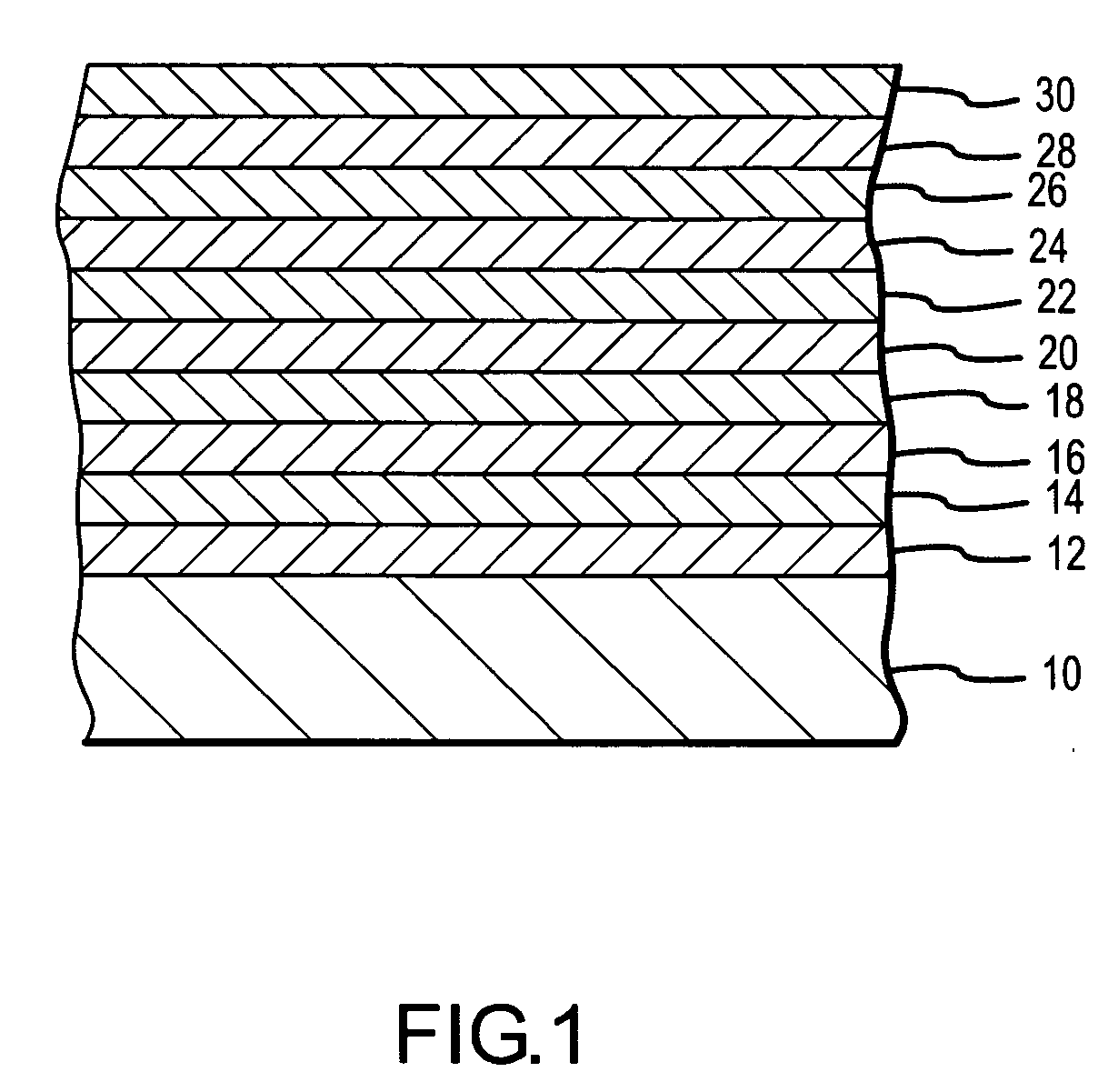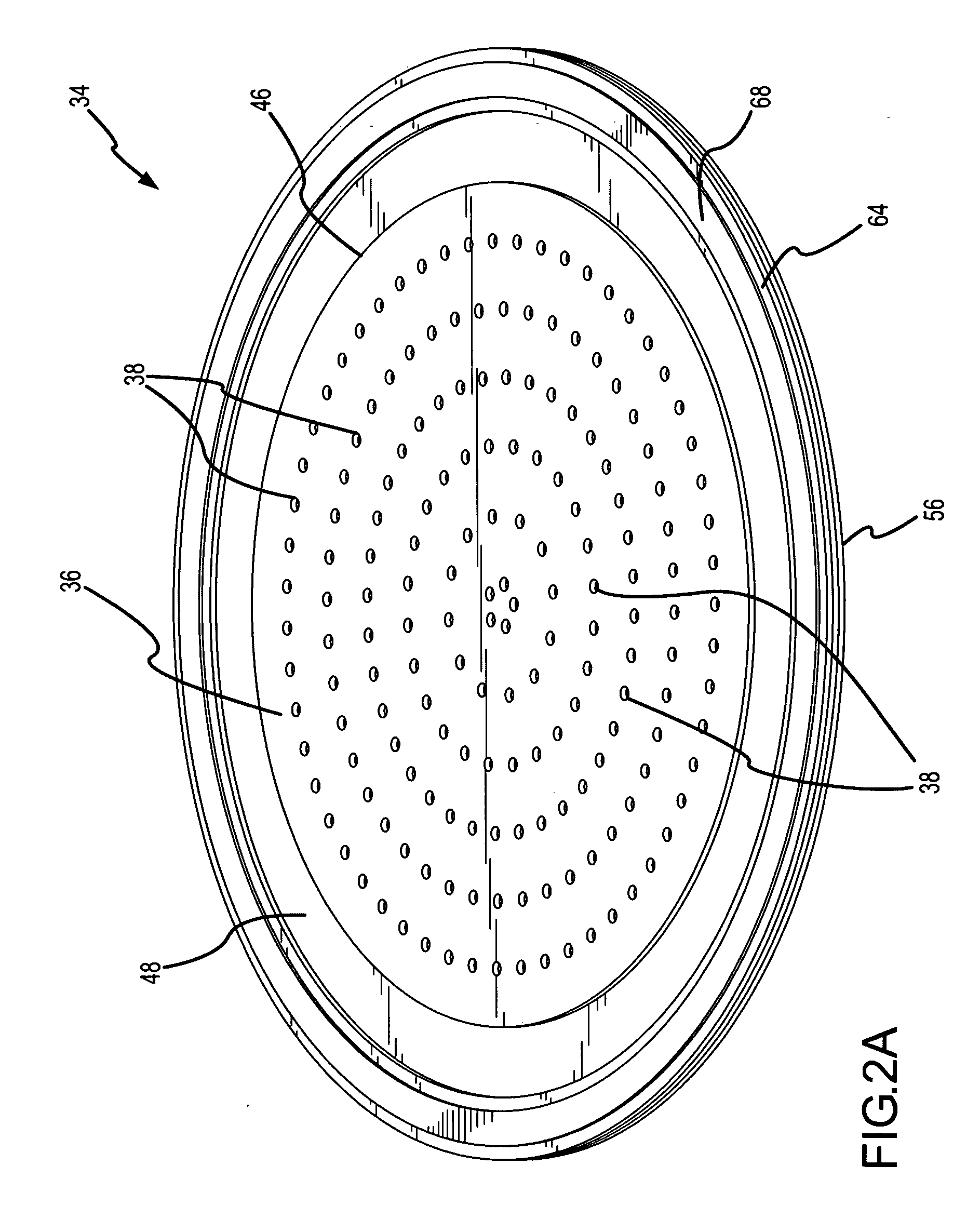Glaucoma implant having MEMS flow module with flexing diaphragm for pressure regulation
a technology of glaucoma and implant, which is applied in the field of microfabricated devices, can solve problems such as damage to optic nerves, and achieve the effects of reducing flow resistance, increasing flow, and reducing flow resistan
- Summary
- Abstract
- Description
- Claims
- Application Information
AI Technical Summary
Benefits of technology
Problems solved by technology
Method used
Image
Examples
Embodiment Construction
[0074] The present invention will now be described in relation to the accompanying drawings that at least assist in illustrating its various pertinent features. Generally, the devices described herein are microfabricated. There are a number of microfabrication technologies that are commonly characterized as “micromachining,” including without limitation LIGA (Lithographie, Galvonoformung, Abformung), SLIGA (sacrificial LIGA), bulk micromachining, surface micromachining, micro electrodischarge machining (EDM), laser micromachining, 3-D stereolithography, and other techniques. Hereafter, the term “MEMS device,”“microfabricated device,” or the like means any such device that is fabricated using a technology that allows realization of a feature size of 10 microns or less. Any appropriate microfabrication technology or combination of microfabrication technologies may be used to fabricate the various devices to be described herein.
[0075] Surface micromachining is currently the preferred ...
PUM
 Login to View More
Login to View More Abstract
Description
Claims
Application Information
 Login to View More
Login to View More - R&D
- Intellectual Property
- Life Sciences
- Materials
- Tech Scout
- Unparalleled Data Quality
- Higher Quality Content
- 60% Fewer Hallucinations
Browse by: Latest US Patents, China's latest patents, Technical Efficacy Thesaurus, Application Domain, Technology Topic, Popular Technical Reports.
© 2025 PatSnap. All rights reserved.Legal|Privacy policy|Modern Slavery Act Transparency Statement|Sitemap|About US| Contact US: help@patsnap.com



